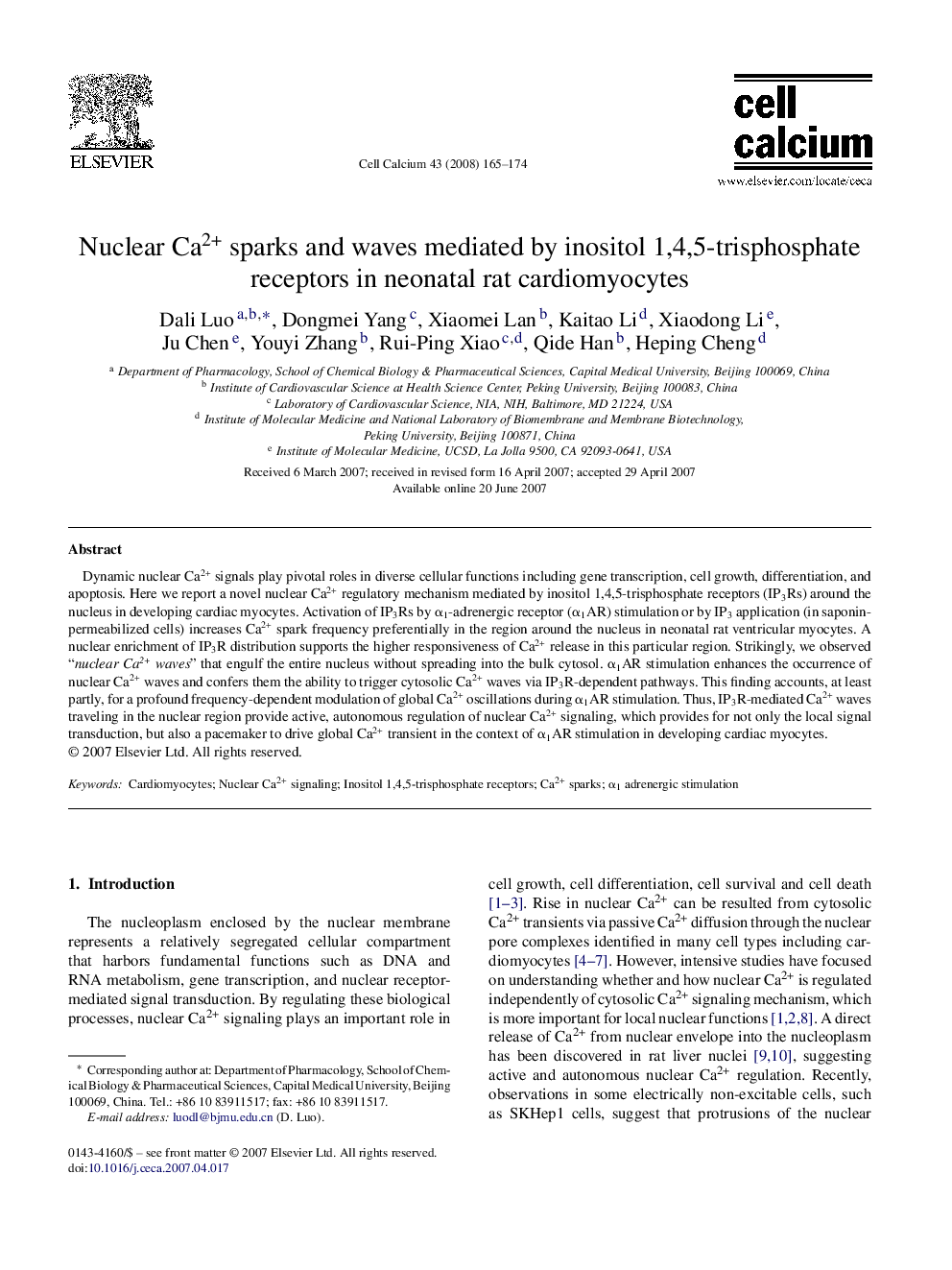| Article ID | Journal | Published Year | Pages | File Type |
|---|---|---|---|---|
| 10926482 | Cell Calcium | 2008 | 10 Pages |
Abstract
Dynamic nuclear Ca2+ signals play pivotal roles in diverse cellular functions including gene transcription, cell growth, differentiation, and apoptosis. Here we report a novel nuclear Ca2+ regulatory mechanism mediated by inositol 1,4,5-trisphosphate receptors (IP3Rs) around the nucleus in developing cardiac myocytes. Activation of IP3Rs by α1-adrenergic receptor (α1AR) stimulation or by IP3 application (in saponin-permeabilized cells) increases Ca2+ spark frequency preferentially in the region around the nucleus in neonatal rat ventricular myocytes. A nuclear enrichment of IP3R distribution supports the higher responsiveness of Ca2+ release in this particular region. Strikingly, we observed “nuclear Ca2+waves” that engulf the entire nucleus without spreading into the bulk cytosol. α1AR stimulation enhances the occurrence of nuclear Ca2+ waves and confers them the ability to trigger cytosolic Ca2+ waves via IP3R-dependent pathways. This finding accounts, at least partly, for a profound frequency-dependent modulation of global Ca2+ oscillations during α1AR stimulation. Thus, IP3R-mediated Ca2+ waves traveling in the nuclear region provide active, autonomous regulation of nuclear Ca2+ signaling, which provides for not only the local signal transduction, but also a pacemaker to drive global Ca2+ transient in the context of α1AR stimulation in developing cardiac myocytes.
Related Topics
Life Sciences
Biochemistry, Genetics and Molecular Biology
Cell Biology
Authors
Dali Luo, Dongmei Yang, Xiaomei Lan, Kaitao Li, Xiaodong Li, Ju Chen, Youyi Zhang, Rui-Ping Xiao, Qide Han, Heping Cheng,
